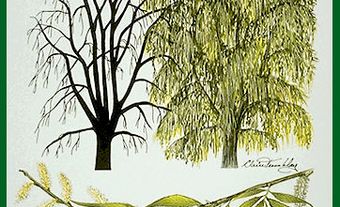
The poplar is a short-lived, deciduous, hardwood tree of genus Populus of the willow family, widely distributed in the northern temperate zone. The genus includes aspens and cottonwoods. In North America, they grow from the treeline to northern Mexico. Forty species occur worldwide; 5 are native to Canada. Aspen (P. tremuloides) and balsam poplar (P. balsamifera) occur across Canada. Hybrids and introduced poplars, such as white or silver-leaved poplar (P. alba) and black poplar (P. nigra), are planted as ornamentals and windbreaks. Leaves are simple, alternate, roundish and toothed. Bark of young trees is smooth, yellowish green, becoming grayish green to brownish and furrowed. Male and female flowers are clustered in drooping catkins on separate trees.
Wind-pollinated flowers appear before leaves; seed matures as leaves develop. Seeds are tipped with long, silky down (cotton) for wind distribution. The widespread, shallow root system facilitates regeneration by "suckers" on cutover and burned land. Abundant suckers allow single trees to produce copses of clones with identical characteristics (eg, early leafing or late retention of autumn colour). Rapid growth makes poplars useful for reclamation. In ideal conditions, pulpwood is produced in 10 years, small sawlogs in 15 and veneer stock in 20. Infertile hybrids that produce no "cotton" have been cloned for ornamental plantings. Natural hybridization is common and causes difficulty in defining species.

 Share on Facebook
Share on Facebook Share on X
Share on X Share by Email
Share by Email Share on Google Classroom
Share on Google Classroom



